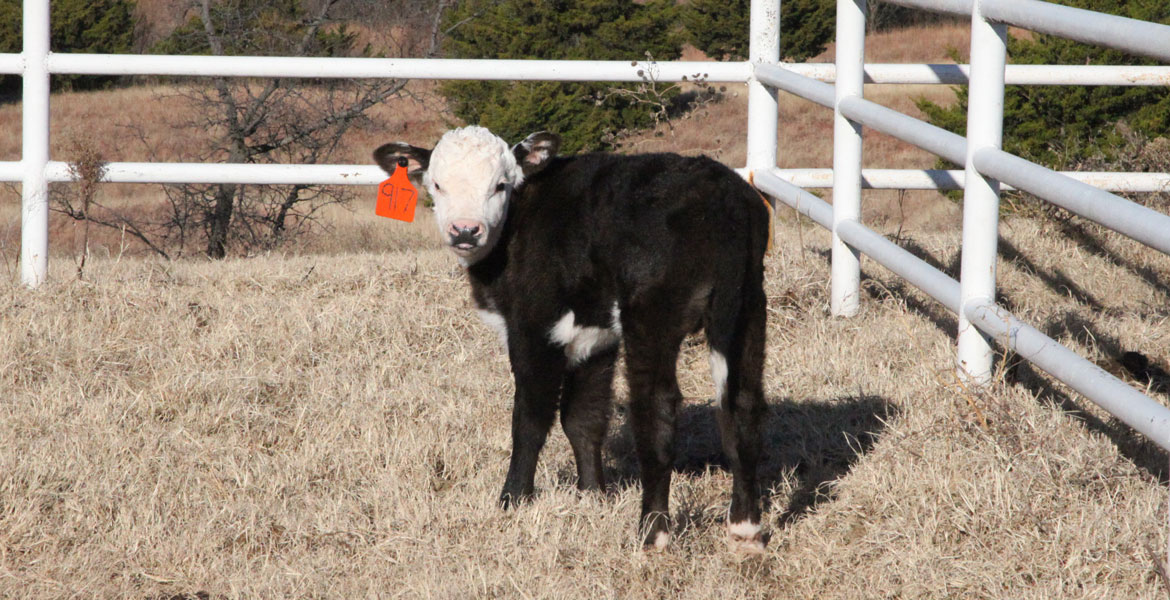
Preventing Cold Stress In Calves
Thursday, January 2, 2020
Producers have a tremendous investment in getting a healthy calf on the ground. A well-developed plan to monitor cows and heifers during calving season is crucial, particularly during the weather extremes of the year. Both severe heat and severe cold impact calf survival, and advanced preparation can help address both cow and calf needs. Calves born during the winter have a unique set of requirements.
The first part of a well-developed calving plan begins before calving season. Take a close look at the cows and heifers and evaluate their appropriateness as dams. Age, disposition, history of calving difficulty, ability to maintain body condition and past illnesses are just a few criteria that impact the selection of females.
One way to avoid calf births during extreme weather is to schedule a defined breeding period that leads to a distinct calving season. Plan for calves to hit the ground in months with moderate temperatures if possible.
To help mitigate bad weather, insure that both cows and heifers are well prepared. Ongoing fetal programming research continues to support that maternal health, and in particular, nutrition at all phases of gestation, can have long lasting impacts for calves throughout their lives. Limiting nutrition in the cow or heifer does not decrease the birth size of the calf and does significantly more harm than good. In addition to nutrition, vaccinate dams appropriately and limit stress, especially during the last trimester.
One option to limit stress is to control the environment. Maintain clean, dry calving areas. Consider providing shelters for animals to escape the weather. However, remember that as animals congregate in shelters, there can be an increase in the pathogen load in the area.
Additionally, be prepared if a female presents with calving difficulty. Develop a plan to transport to a veterinary clinic or have excellent on-site facilities to address a dystocia.
Next, monitor pregnant females closely for signs of calving. A calf that is too large relative to maternal size is the most common cause of calving difficulty followed by incorrect positioning of the calf. Early intervention at the first signs of calving is critical for both calf and dam survival. A calf not delivered in a timely manner will need intervention by a skilled individual. Heifers that labor in Stage 2 of parturition for longer than an hour and cows that labor longer than 30 minutes should be examined immediately.
Remember to discuss your calving plan with your veterinarian. Communicate well before there is a calving problem. Your veterinarian can work with you and your team to develop protocols so everyone is on the same page when a problem occurs. Your veterinarian can also help you develop essentials for a calving kit.
Items to consider in your calving kit may include:
- Veterinary emergency number in cell phone
- Breeding dates and due dates with associated sire
- Calving book
- Flashlights with batteries
- Eartags with marker
- Tag applicator
- Iodine for navel
- Catch pen and functional chute
- 5 gallon bucket
- Calf puller in working order
- Obstetrical chains and handles
- Calf sled
- Syringes and needles
- Exam and obstetrical gloves
- Obstetrical lube
- Clean towels
- Straw or hay for bedding
- Esophageal feeder
- Colostrum or colostrum replacer
- Medications prescribed by your veterinarian such as pain medications and sedatives
- Halter
- Lariat
- Sorting stick
- Large trash bags
- Disinfectants
Following delivery, the goal is to see the calf up and nursing as soon as possible. Delays in a calf receiving colostrum have both short and long-term impact on the immune system. Ideally, a calf should receive colostrum within the first two hours of life. Administering colostrum to calves without a suckle reflex should be done with extreme caution due to the increased risk of aspiration pneumonia. Milking the dam or maintaining a supply of frozen colostrum are the best options for colostrum replacement. Commercially prepared colostrum replacer is acceptable if a cow-derived source is not available.
Weather impacts a calf’s ability to thermoregulate. Calves born in extreme cold quickly utilize all body fat reserves, putting them at risk. Exposure to wind can exacerbate cold temperatures. Assess body temperature if a calf appears stressed.
The best way to monitor a calf’s temperature is with a rectal thermometer. Inexpensive digital thermometers work well and make it easy to evaluate progress when warming the calf. If a calf’s temperature falls below 100 degrees F, gradually raise that temperature. Bring the calf indoors and out of the elements if needed. When used appropriately, warm water baths, blankets and warming boxes are all options to rewarm a calf.
Be careful not to damage the skin of the animal by either rubbing too vigorously or placing them too close to heaters. Additionally, do not wash off the odor of amniotic fluid. This helps prevent rejection by the dam. Warm oral or intravenous fluids as advised by a veterinarian can also make a big difference. Once a calf is warm and has been fed colostrum, return it to its mother.
Working with your veterinarian to develop protocols before calving season can reduce stress and lead to more successful outcomes if an emergency arises. Your veterinarian can guide and train you and your team on how and when to call for assistance. In the event that resources are unavailable or overwhelmed, Oklahoma State University College of Veterinary Medicine (OSU CVM) Hospital offers services to assist producers in urgent need. OSU CVM offers 24-hour intensive care provided by a team of food animal specialists.
STORY BY: Rosslyn Biggs, DVM
